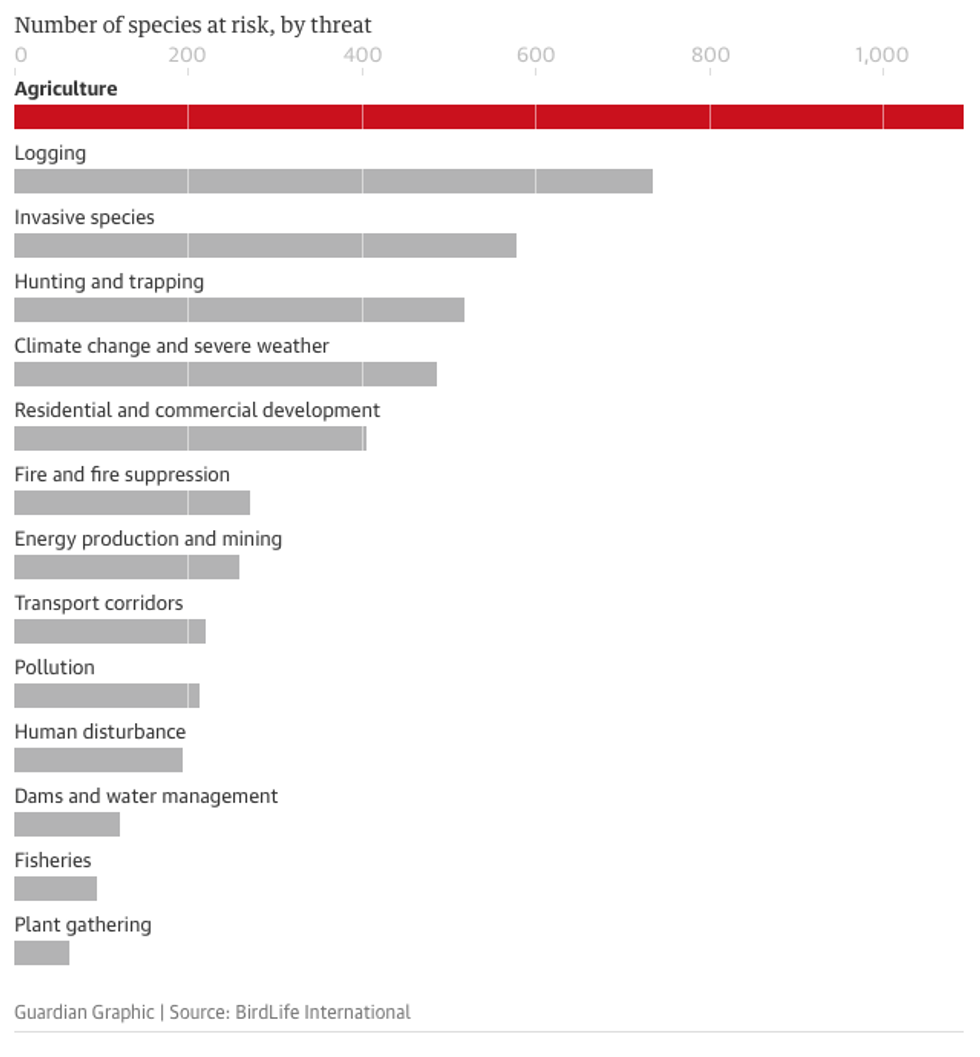The world's 11,000 bird species are in the midst of a major biodiversity crisis--with one in eight threatened by extinction--because of human activity, according to a five-year study published Monday.
"Human-induced climate change may prove to be the most serious threat of all."
--State of the World's Birds
State of the World's Birds (pdf), conducted by the U.K.-based charity BirdLife, found that 40 percent of bird species populations worldwide are in decline due to various man-made threats.
"Agricultural expansion, logging, overexploitation, urbanization, pollution, disturbance, and the effects of invasive alien species are all driving bird declines and diminishing the natural world," the report details. "Longer term, human-induced climate change may prove to be the most serious threat of all."
Although the study focused solely on the state of bird species, as BirdLife International CEO Patricia Zurita explained in the introduction, the findings have broader implications.
"Birds are more popular and better studied than any other comparable group and are consequently an excellent means through which to take the pulse of the planet," Zurita wrote. "So, while the report focuses on birds, its conclusions are relevant to biodiversity more generally."
Experts estimate that global warming--driven largely by greenhouse gas emissions from burning fossil fuels--is currently affecting 33 percent of world's threatened bird species.
That number is expected to rise as a growing number of species struggle to adapt to warming temperatures, which are disruptive to migratory and breeding patterns and well as predator-prey relationships. The consequences of these disruptions could travel all the way up the food chain, as detailed in another study published this month.
While the climate crisis is identified as the most serious long-term threat, currently, the greatest threat to birds is unsustainable agricultural practices.
In recent centuries, there has been a surge in demand for tropically grown products such as coffee, cocoa, sugar, palm oil, and soya, which has contributed to a dramatic expansion of farming. The report claims that "the area of Earth's land surface given over to agriculture has increased more than sixfold over the past 300 years."
Noting that researchers estimated 74 percent of the 1,469 threatened species are impacted by agriculture, the Guardian charted the number of species at risk by threat:
A key element of the broader agricultural threat is the use of neonicotinoids, pesticides that are common in North America and Europe--despite mounting opposition. Experts are concerned not only how neonics, as they are called, impact seed-eating birds, but also how their buildup in soil and plants could have long-term and further-reaching consequences.
"The data are unequivocal. We are undergoing a steady and continuing deterioration in the status of the world's birds," concluded Tris Allinson, BirdLife's senior global science officer, and lead author of the report. "The threats driving the avian extinction crisis are many and varied, but invariably of humanity's making."


